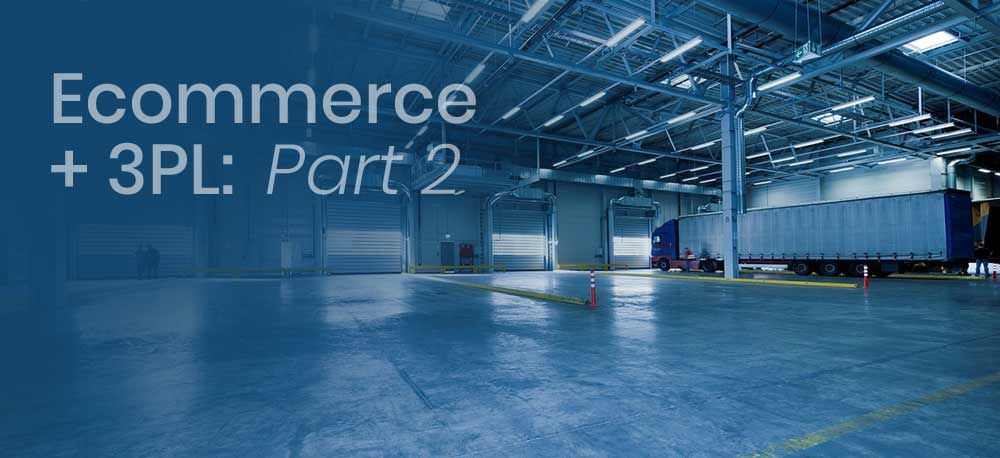Share
Author
George Anderson
Share
Ecommerce + 3PLs: Part 2
In Part I of our series on Ecommerce & 3PLs, we covered the unique model which our client on medical/pharma manufacturing developed (and how Corevist Commerce supports that model). In this post, we’ll cover a new trend we’re seeing—3PLs (3rd party logistics providers) actually offering their own ecommerce solutions to manufacturers, as exemplified most recently by Ryder’s announcement of ecommerce services for their customers.
Let’s dive in.
The Problem: Manufacturers need to get closer to the customer
Every manufacturer has one thing in common, regardless of industry, company size, or geography: Everyone wants to get closer to the customer. That “customer” has many identities in manufacturing; the customer could be dealers, distributors, partners, or even B2C consumers.
However manufacturers define that term, everyone needs to get closer to their customer. Everyone needs to become easier to buy from.
Of course, manufacturers aren’t the only ones in the ecommerce game. Distributors have been there for a long time, and now 3PLs are joining, too (more on that below). Yet each type of company is encountering that same question—How do we get closer to the customer?
The answer depends on where you start. For example, Amazon started with an ecommerce website and built warehouses to support their growing fulfillment business. Walmart started with warehouses and built ecommerce to get closer to the customer (including their purchase of Jet.com).
Both of these companies are formidable—and they come to ecommerce + fulfillment from completely different angles.
Everyone wants to stake a claim here. Everyone wants to own the customer relationship from top to bottom. The key is knowing your business, knowing what’s available, and making a good first entry into the field.
That brings us to 3PLs and how they fit into the ecommerce world.
3PLs integrating with ecommerce isn’t new in B2C
In the B2C world, 3PLs have integrated with ecommerce for a long time. The top 3PL providers all support ecommerce integrations. That makes sense: a small B2C online business is a primary target customer for a 3PL. A small B2C business like this can’t afford to run fulfillment in house, and since all of their business is transacted online, integration with the 3PL solution is a must.
No, ecommerce + 3PL isn’t new in B2C. However, it is new in B2B.
In the news: Ryder launches B2B ecommerce solution
As Ryder announced in their press release, their new ecommerce solution offers “an alternative to third-party marketplaces by fulfilling orders of manufacturer products direct to consumers.” Ryder’s value proposition here focuses (understandably) on fulfillment. The main value to manufacturers is the ability to take ecommerce orders through Ryder’s service and have Ryder fulfill those orders to the customer.
That’s the first such public announcement in B2B to cross our desks here at Corevist. However, we’ve extended our ecommerce solution for this kind of situation in the past (as we covered in Part 1 of this series), and we’re getting more and more questions about this type of relationship as we talk to manufacturers who are looking to launch ecommerce.
The Takeaway: Corevist connects 3PLs and manufacturers
Both 3PLs and manufacturers should think carefully about their role in the ecommerce business. Historically, neither type of company (3PL or manufacturer) has been an “ecommerce expert.” 3PLs excel at fulfillment and logistics—it’s their bread and butter. Likewise, a manufacturer’s raison d’etre is the value proposition of their product.
Yet ecommerce has changed everything. How can the fulfillment experts and the manufacturing experts work together to go direct to the consumer online?
At Corevist, we love partnering with manufacturers and 3PLs to provide ecommerce that works for everyone involved. It’s a great way for manufacturers to grow in the direction of getting closer to their customers, shipping smaller quantities of products to smaller customers less frequently, without needing capital investments to get up and running. In that sense, giving your 3PL partner access to Corevist Commerce is a great strategic move.
Moving forward: FREE case study
Wondering what ecommerce looks like at a complex manufacturing operation? Download this case study on Blount International. You’ll learn how this leading manufacturer of forestry and agricultural equipment launched ecommerce that works for everyone involved.
[want_more title=”Learn more” subtitle=”FREE Case study: Blount International” description=”Learn how multiple departments came together as Blount International launched ecommerce.” button_text=”Download Now” button_link=”https://www.corevist.com/blount-international-inc/” button_class=”btn btn-primary blount-case-study” title2=”See it for yourself” subtitle2=”Talk to us” description2=”Curious what Corevist Commerce can do for you? Let us show you a personalized demo. You’ll see ecommerce with real-time SAP data.” button_text2=”Schedule Demo” button_link2=”https://www.corevist.com/demo/” button_class2=”demo-popup”]









